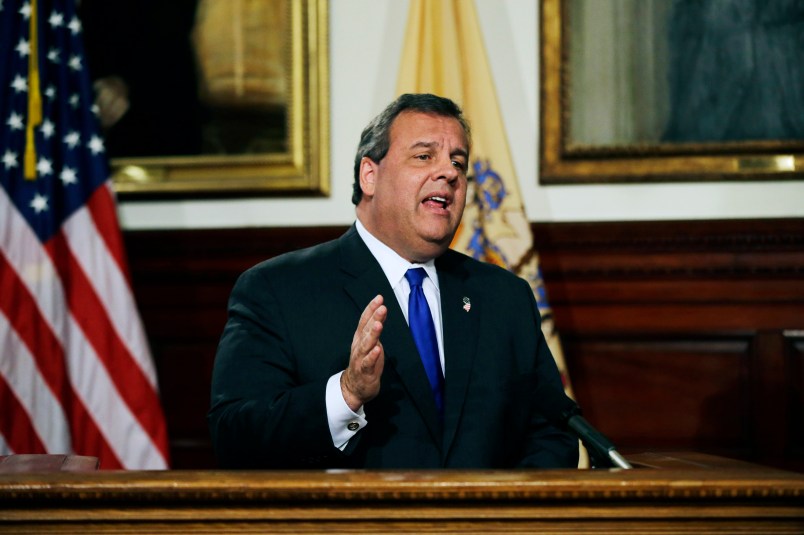New Jersey Gov. Chris Christie (R) has acknowledged that the New Jersey bridge closing scandal has reached his office.
In a statement issued Wednesday afternoon, Christie responded to the revelation that one of his close aides discussed plans to close lanes on the George Washington Bridge last year.
“What I’ve seen today for the first time is unacceptable,” Christie said. “I am outraged and deeply saddened to learn that not only was I misled by a member of my staff, but this completely inappropriate and unsanctioned conduct was made without my knowledge.”
The lane closures led to a massive, multi-day traffic jam in the town of Fort Lee, N.J. — a traffic jam Democrats have argued was intended as a form of retaliation against Fort Lee’s Democratic mayor. Officials with the Port Authority of New York and New Jersey, which oversees the bridge, have maintained that the lanes were closed as a result of a traffic study.
Christie, meanwhile, had in recent weeks dismissed the suggestion that the lane closures were a scandal, and made jokes about the idea that his office was involved. He adopted a very different tone in his statement on Wednesday, promising that “people will be held responsible for their actions.”
“One thing is clear: this type of behavior is unacceptable and I will not tolerate it because the people of New Jersey deserve better,” Christie said.
Christie’s statement was prompted by documents obtained Wednesday by TPM and other media outlets. One of the documents showed Bridget Anne Kelly, Christie’s deputy chief of staff for legislative and intergovernmental affairs, emailing in August with David Wildstein, one of Christie’s appointees to the Port Authority. (Wildstein announced his resignation from the Port Authority late last year.)
“Time for some traffic problems in Fort Lee,” Kelly wrote to Wildstein in an Aug. 13 email.
“Got it,” Wildstein replied.
The documents are heavily redacted in parts, making it hard to tell if Kelly meant the traffic problems were the motivation for the closure, or whether she was anticipating the traffic as an effect of the order.
This post has been updated.






